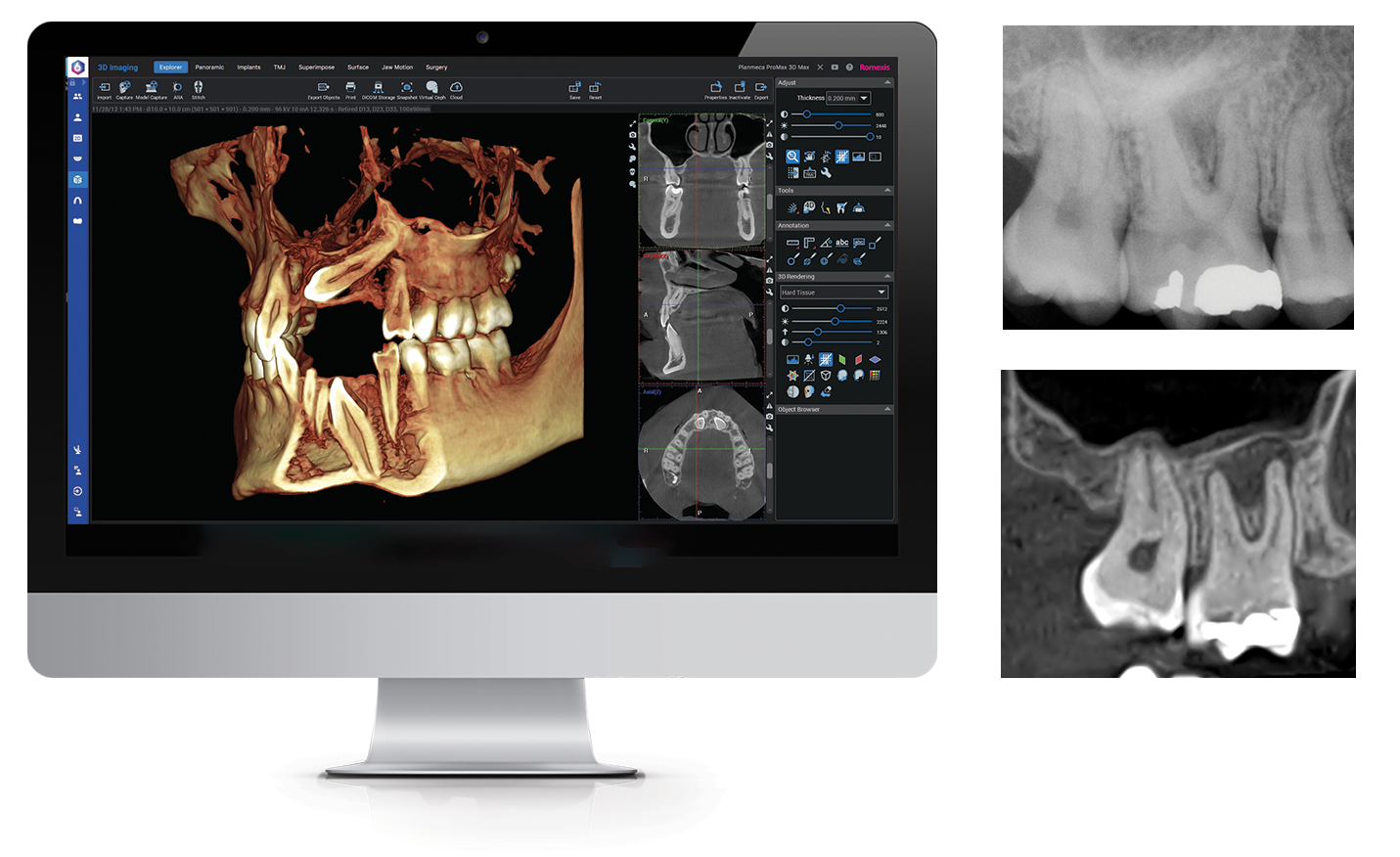What’s in Your Driveway?
If any car could take you from A to B, what made you choose the one you’re driving? Once you determine your wants and needs, purchasing decisions become granular regarding personal preferences and budgets.
Using this analogy, what are you using for diagnostic imaging?
Is the answer 2D intraoral X-rays?
Then it’s time to consider an upgrade.
Clinical studies have shown that 2D intraoral imaging is about 25% accurate in detecting periapical lesions, while 3D imaging is 100% accurate. Using 3D imaging allows you to arrive at an immediate and accurate diagnosis. If you’re only using 2D intraoral imaging, your imagery isn’t as accurate as it would be with 3D and that will likely cause you to miss crucial signs when diagnosing your patients. This may force you to put patients on a watch to wait and see if the pathology becomes obvious. If the problem is severe, you’ve lost the ability to intervene at an early stage.
The purpose of imaging equipment is to help you diagnose pathology. Therefore, CBCT is a better “vehicle” to get you there.
What’s Your Five-Year Plan?
Deciding the best system to buy shouldn’t begin with “show me the least expensive option.” CBCT is a sophisticated piece of technology you’ll use for many years to come. You need to consider what kind of dentistry you currently do and what you want to do in five years. Ask yourself, “Am I interested in doing implants and/or dental sleep medicine?” These questions will help you identify the correct CBCT for your office.
Reduced Radiation with 3D
If you thought CBCT images resulted in a high patient dose, you would use it cautiously. What if you could capture CBCT images using low levels of radiation? You could take a 3D image whenever you needed to diagnose a problem. Low radiation is a “need” and is better for the patient. Planmeca Ultra Low Dose™ achieves a 77% average reduction in dose compared to standard imaging protocols with no reported loss of diagnostic quality.
“I think it’s important to provide patients with the highest level of care and for clinicians to stand behind their work. Having this Planmeca technology and the ability to see things on a CBCT that I could not on a 2D X-ray allows us to offer a predictable and stress-free experience for our patients.” Dr. Robert Wertke
Want to dive deeper? Download this eBook from Planmeca.
- According to a study published by the International Endodontic Journal, Detection of periapical bone defects in human jaws using cone-beam computed tomography and intraoral radiographydoi:10.1111/j.1365-2008.01538.x
- According to “Dosimetry of Orthodontic Diagnostic FOVs Using Low Dose CBCT Protocol” by JB Ludlow and J






You must be logged in to post a comment.